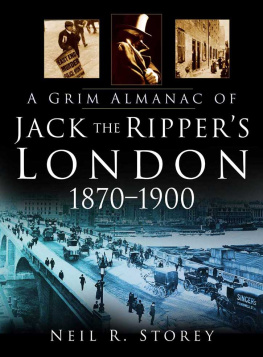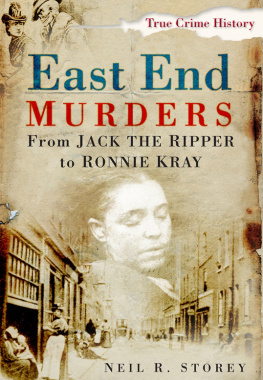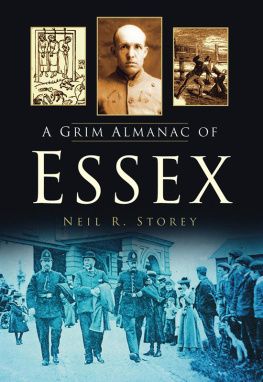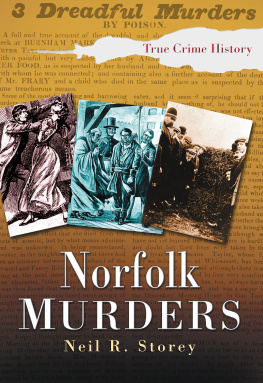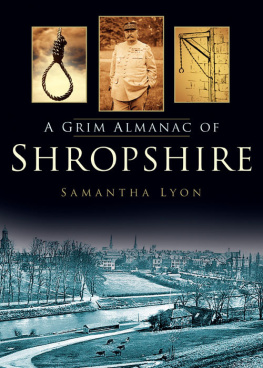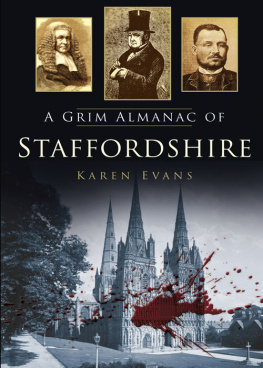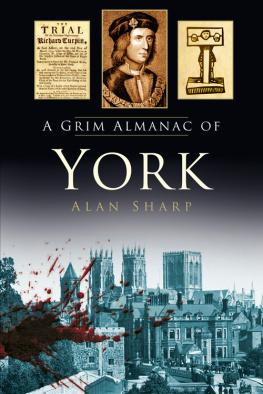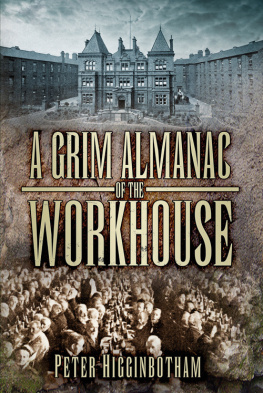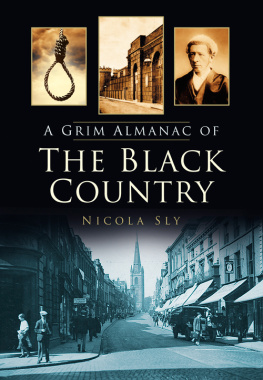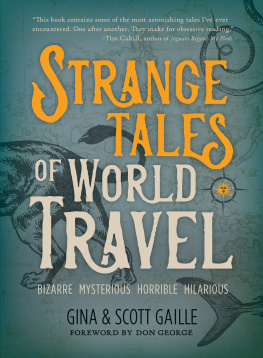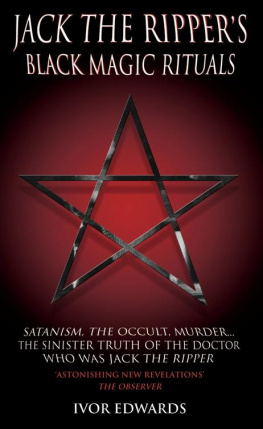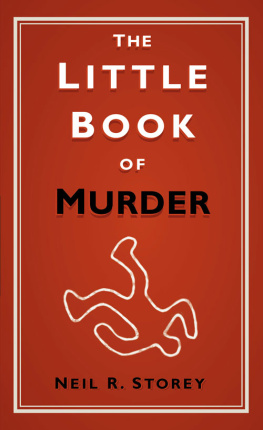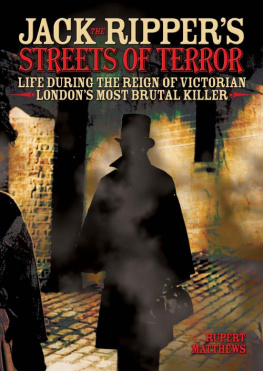A G RIM A LMANAC OF
J ACK THE R IPPERs
L ONDON
18701900

A G RIM A LMANAC OF
J ACK THE R IPPERS
L ONDON
18701900
N E I L R. S T O R E Y
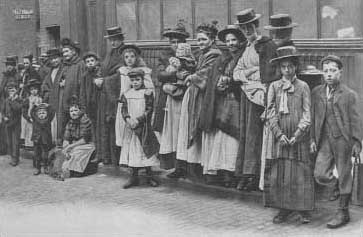

First published in 2004
This edition first published in 2007
The History Press
The Mill, Brimscombe Port
Stroud, Gloucestershire, GL5 2QG
www.thehistorypress.co.uk
This ebook edition first published in 2013
All rights reserved
Neil R. Storey, 2004, 2008, 2013
The right of Neil R. Storey to be identified as the Author of this work has been asserted in accordance with the Copyrights, Designs and Patents Act 1988.
This ebook is copyright material and must not be copied, reproduced, transferred, distributed, leased, licensed or publicly performed or used in any way except as specifically permitted in writing by the publishers, as allowed under the terms and conditions under which it was purchased or as strictly permitted by applicable copyright law. Any unauthorised distribution or use of this text may be a direct infringement of the authors and publishers rights, and those responsible may be liable in law accordingly.
EPUB ISBN 978 0 7524 9626 9
Original typesetting by The History Press
This book is dedicated with gratitude and respect to Stewart P. Evans The Guvnor
C ONTENTS
INTRODUCTION
In the long catalogue of crimes which has been compiled in our modern days there is nothing to be found, perhaps, which has so darkened the horizon of humanity and shadowed the vista of mans better nature as the series of mysterious murders committed in Whitechapel during the latter part of the year 1888. From east to west, from north to south the horror ran throughout the land. Men spoke of it with bated breath, and pale-lipped women shuddered as they read the dreadful details. A lurid pall rested over that densely populated district of London, and people, looking at it afar off, smelt blood. The superstitious said the skies had been of deeper red that autumn, presaging desperate and direful deeds, and aliens of the neighbourhood, filled with strange phantasies brought from foreign shores, whispered that evil spirits were abroad.
Introduction to the account of the Whitechapel Murders in
Famous Crimes edited by Harold Furniss (19034)
B y the late nineteenth century Great Britain was riding on the crest of its imperial wave. The industrial revolution had seen the country evolve into the world superpower, with an empire so vast it could be truly claimed that the sun would be shining on some part of it whatever the time in England. Because there was more wealth to go around, a new class emerged, the middle class, made up of the likes of managers, clerks and administrators, who were able to afford better living standards and demanded better housing. Property speculators were willing to oblige and very soon whole new areas inhabited by upstanding middle-class folk sprang up across the country. But all was not well; the delineation between the haves and have nots had never been greater. Thousands in the great cities were living in poverty and squalor, none more so than those in the East End of London. Here were the underclass and the marginal, the poverty-stricken, the drink-sodden, the orphans, the criminal types, the immigrants, the unemployed, the revolutionaries, all who could be feared and all who proved again and again that something was rotten in the core of mighty Britain. In the very heart of the greatest empire on earth was to be found the rotten stench of such poverty that it could be equated with the deprivation suffered by those living in the poorest corners of the colonies.
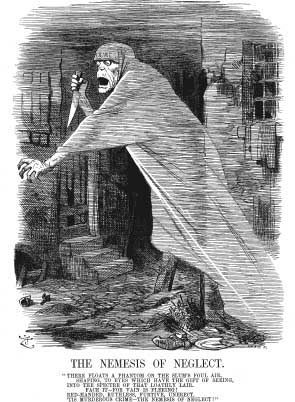
Punch, 29 September 1888.
Since the 1870s concern for the situation had been shown in the essential Sunday magazines that were religiously read in the parlours of middle-class households. The names and Christian works of Dr Thomas Barnardo and William Booth of the Salvation Army were known across the country. The appetites of the literate had been whetted, and the expanding number of magazines and journals all wanted their own angle on the abyss that was East London. A few had even ventured to send a reporter into this netherworld and publish the experiences and horrors he witnessed in the next edition.
The generation of 1888 had missed out on the spectacle of public execution, as it was now considered to be a vile and inhuman act, but it did not curb their enthusiasm to read about the executions still carried out within prisons in every lurid detail. One of the most widely read periodicals of the late nineteenth century was the Illustrated Police News. Begun in the 1860s, it was illustrated with explicit and vicarious line drawings of violent crimes, murders, victims (before and after death), strange deaths, monsters and crime-fighters. Even pictorial magazines aimed at the better homes, such as the Graphic, the Sphere and the Illustrated London News, whose pages had been filled with royal visits, weddings, glorious military campaigns and leading politicians, began to include more frequent depictions of disasters, riots, trials, crimes and criminals. It was almost as if every press pen was poised, trembling in anticipation for something to burst out of the abyss, which it did in August 1888, and the streets and pages of the press were soon running with blood.
On Tuesday 7 August 1888 a body, later identified as that of Martha Tabram, a casual prostitute, was discovered brutally stabbed on the first-floor landing of George Yard buildings, Whitechapel. Despite press coverage and an extensive police investigation, led by Inspector Edmund Reid of Whitechapel CID, her killer was not traced. Almost as the press were giving up on the story, another horrible murder of another unfortunate was discovered on Bucks Row, Whitechapel. This mutilated body was identified as that of Mary Ann Nichols, who was known on the streets where she plied her trade as Polly. The press soon connected this murder with the Tabram killing and frantically sought details of other murders in the area to link with this elusive rampaging maniac, whom they dubbed the Whitechapel Fiend. On Saturday 8 September another body was discovered at the rear of 29 Hanbury Street, Spitalfields. This time the mutilation went far beyond cuts and slashes. The police surgeons report on the body identified as that of Annie Chapman revealed that some of her internal body parts had been taken away by her killer. The press leapt on this latest horror and the Illustrated Police News had another front-page sensation. The case was now well in the public eye and clear action had to be seen to be taken. A team led by Inspector Abberline was despatched from Scotland Yard to lead the investigation on the ground. The locals, dissatisfied with police progress and fearful for the safety of the people of the East End, set up patrols and vigilance committees in attempts to run the killer to ground.
On 27 September 1888 the Central News Agency was sent a letter by someone whose name has become infamous, more evocative, than the Whitechapel Fiend. The name came straight from a street parlance understood by a society familiar with Jack Tar, Slippery Jack, Spring Heeld Jack step forward Jack the Ripper. In the early hours of 30 September the public were presented with a Double Event, where the murderer was allegedly disturbed in his first act and left poor Long Liz Stride with her throat cut in Dutfields Yard beside the International Working Mens Educational Club on Berner Street. His blood lust unsated, Jack found his second victim in the space of an hour. Kate Eddowes, yet another casual prostitute, was found in Mitre Square. The wounds inflicted upon her were yet more hideous. The typical cut to the throat had been delivered, but her face had further enigmatic cuts delivered to it and there was extensive abdominal mutilation. At her inquest it was revealed part of her womb and left kidney had been removed by the killer. The media hyperbole was kept boiling with witness accounts and statements from acquaintances given to reporters, lurid broadsheets and revelations of suspects arrested and clues to the identity of Jack the Ripper. The press went into overdrive when none other than George Lusk, chairman of the Whitechapel Vigilance Committee, was sent half a kidney. With it was a bloodstained note purporting to come from the killer himself in which he claimed to have eaten the other half and gave the return address as From Hell.
Next page
